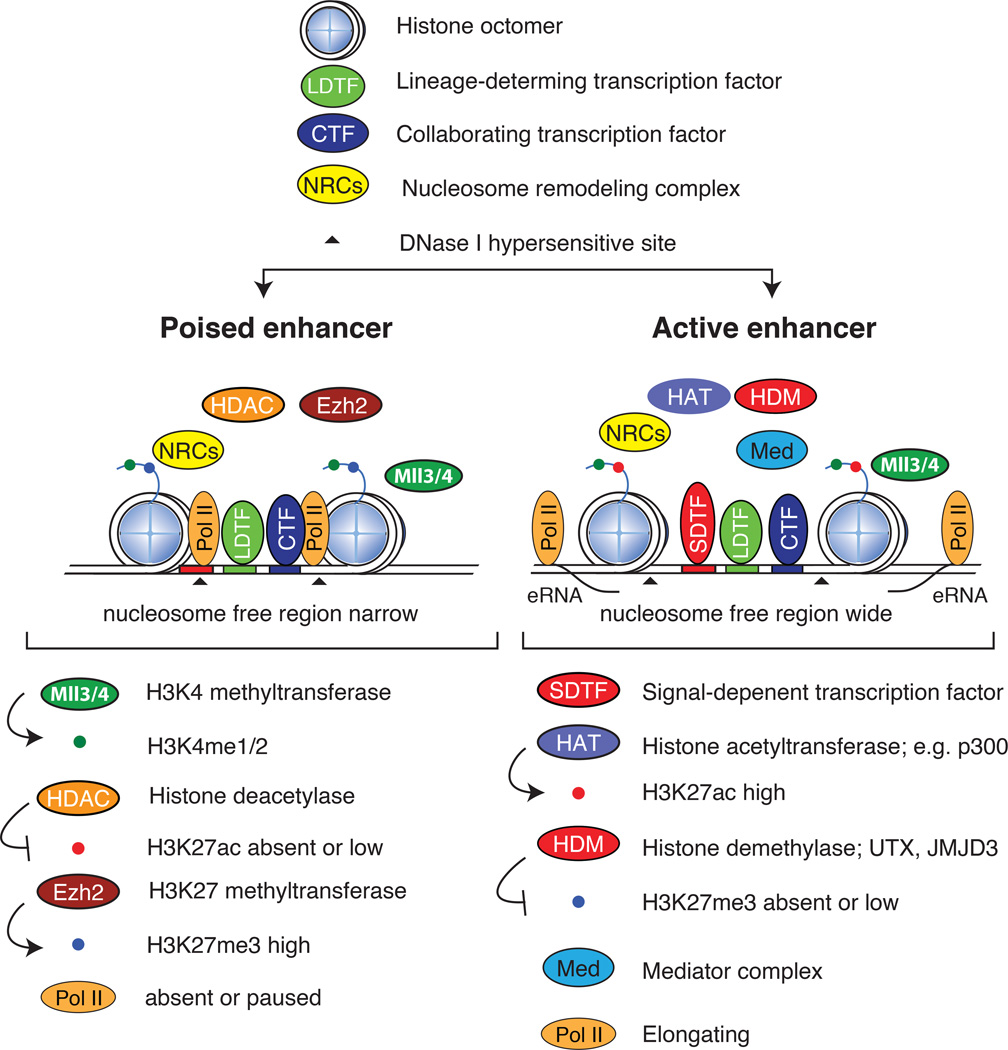Figure 1.
The anatomies of poised and active enhancers. The characteristic features of poised and active enhancers are shown, including the binding of lineage-determining transcription factors (LDTFs) and collaborating transcription factors (CTFs) to closely spaced recognition motifs (blue and green sites, respectively) on the DNA. The binding of these factors in concert with nucleosome remodeling complexes (NRCs) initiates nucleosome displacement to form narrow nucleosome free regions at poised enhancers (top). At poised enhancers, the redundant histone methyltransferases (HMTs) myeloid/lymphoid or mixed-lineage leukemia protein 3 (MLL3) and MLL4 deposit the active H3K4me1 and H3K4me2 marks, whereas EZH2 (a component of the polycomb complex) deposits repressive H3K27me3 and histone deacetylase (HDAC)-containing complexes maintain histones in a repressed deacetylated state. Pol II is either absent or low at poised enhancers. In response to various cues, signal-dependent transcription factors (SDTFs) associate with recognition motifs in close association with LDTFs, which results in additional nucleosome displacement (bottom), as observed by widening of the DNase I-hypersensitive sites. SDTFs recruit co-activator complexes containing histone demethylase (HDM) complexes that remove H3K27me3 marks, histone acetyltransferase (HAT) that deposit H2K27ac, and the mediator complex. The transformation to elongating Pol II results in bidirectional transcription — a hallmark of active enhancers — and the generation of enhancer RNAs (eRNA), which is closely coupled to enhancer activity.

